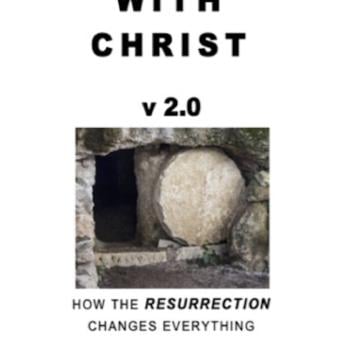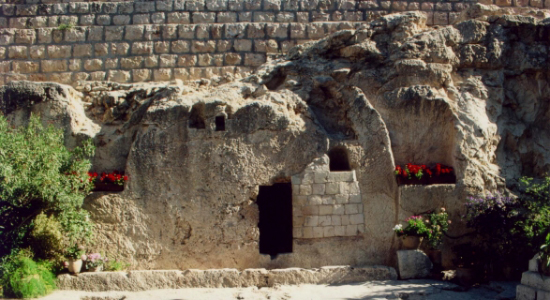The following post is an extract from Straight to the heart of Revelation:
INTRODUCTION: GOD IS ON THE THRONE
“And they cried out in a loud voice: ‘Salvation belongs to our God, who sits on the throne, and to the Lamb.’” (Revelation 7:10)
The President of the United States rules from the Oval Office. He sits on a chair behind the impressive Resolute desk and in front of the carpeted Seal of the President. The whole room is designed, in the words of President Bartlet in the TV series ‘The West Wing’, “to remind guests that this is the office of the President of the United States, and that the person on this side of the desk is the President.” Even in a democracy, there is no doubt that one chair tops them all.
Ancient kings were less subtle in the way they demonstrated this fact. King Solomon made a throne of ivory and gold so that he could sit at the top of six magnificently decorated steps, with his feet resting on a footstool of pure gold. The Persian King Xerxes appears in the film “300” at the top of a massive throne reached by twenty ivory steps, with the whole structure transported at his bidding on the shoulders of several dozen slaves. His herald loudly proclaims him to be “the ruler of all the world, the god of gods, king of kings,” but his throne already conveyed this claim without words. It tells us that Xerxes is in control. Xerxes will prevail. Xerxes is to be obeyed.
That’s why thrones and their modern, democratic equivalents play such an important role in times of great crisis. It’s why President Reagan addressed America from his chair in the Oval Office after the explosion of the Space Shuttle Challenger, and why President Bush addressed America from the same chair on the day that two passenger jets crashed into the Twin Towers in New York. Both Presidents chose to address the nation from their ‘throne’ in a show of force that they were still seated in the Oval Office and that they would prevail. In George W. Bush’s words: “They have failed; our country is strong… The functions of our government continue without interruption.”
We need to understand all this if we are to grasp the message of the book of Revelation. The last book of the Bible is not primarily about weird beasts, strange allegories, or encoded detail about the final years of Planet Earth. It’s a book which focuses on one great fact which trumps all others throughout the whole of AD history. It’s a simple fact, but a fact which changes everything: God is on the Throne of the universe.
The Greek word thronos, from which we get our English word throne, is only used 15 times in the New Testament leading up to the book of Revelation. It’s in the background in the gospels when Jesus proclaims that the Kingdom has come, and it moves to the foreground in Acts when the apostles go into all the world to preach the Gospel of the Kingdom. But it’s in the book of Revelation that the Throne of God moves centre-stage. The word is used 46 times and in 17 of the 22 chapters. Again and again John’s vision picks up on the many Old Testament references to the Throne of Heaven, and tells us that one fact is central to the Christian worldview and to how Christians must live within AD history. God is on the Throne. God is in control. God will prevail.
John received this vision whilst exiled on the Greek island of Patmos in about 95AD. He was aged about a hundred, the last surviving disciple, and his exile hadn’t dented his position as the elder-statesman of the Church. Times were bad, very bad, and the Church stood at a moment of extreme crisis. The early apostles had all been killed by beheading, crucifixion or worse. Thousands of ordinary Christians had been martyred in wave after wave of persecution, either as human torches in Nero’s gardens or as fodder for the lions at the public games. Even worse than this persecution from the outside was the way that the Church had also become riddled on the inside with false teaching, immorality and corruption. Even the faithful had begun to flounder in disappointment and despair. Whatever had happened to Daniel’s picture of the Kingdom of God filling the whole earth? What had happened to the Parable of the Mustard Seed and the unstoppable advance which Jesus promised to the Church?
It was in this tumultuous context that Jesus appeared to John to give him answers for the Church. The first word of the book in Greek is apokalupsis, which means Revelation or simply Apocalypse, and which literally means disclosure, laying bare or unveiling. The Revelation John received is Jesus’ message to his suffering and bewildered Church which lays bare his plans and purposes for the period between his ascension and his triumphant Second Coming. If at first it seems daunting, inaccessible and frankly a bit weird, then that’s because it is packed with divine secrets which are meant for-our-eyes-only. Daniel received an apocalyptic vision like John’s several hundred years earlier and was told that he received it in a series of strange pictures so that “none of the wicked will understand, but those who are wise will understand.” We need to understand John’s Revelation in the same way, as a deliberately baffling series of pictures and portents which reveal God’s purposes and strategies to his People alone. If the Holy Spirit brings them to life then they provide answers to our deepest questions, but if he does not then they will only yield ideas for fantasy novelists and the writers of computer games. The book can be divided simply along the following lines:
Chapter 1 John’s vision of Jesus and the start of the Revelation
Chapters 2-3 A first overview of AD history – The Seven Churches
Chapters 4-5 John’s vision of Heaven and the continuation of the Revelation
Chapters 6-7 A second overview of AD history – The Seven Seals
Chapters 8-11 A third overview of AD history – The Seven Trumpets
Chapters 12-14 A fourth overview of AD history seen from Three Perspectives
Chapters 15-16 A fifth overview of AD history – The Seven Bowls
Chapters 17-20 A sixth overview of AD history which expands on the Seventh Bowl
Chapters 21-22 John’s vision of the Age to Come and the end of the RevelationI have written this book because we still live in the time of John’s crisis and because the Revelation he received from Jesus is still the definitive answer to today’s big questions. It’s God’s answer to the questions which face us every day of our lives, and it’s time for us to rediscover the book of Revelation and its message of hope.
In a world where an estimated 170,000 Christians are martyred for their faith each year, we still need the Revelation which Jesus gave to John.
In a world where the Church remains terribly flawed and where every week sees another church close down and its building turned into a nightclub, a restaurant or a mosque, we need the Revelation which Jesus gave to John.
It’s a Revelation which changes everything. It’s a Revelation that God is on the Throne. And he is working out his strategies from the control-room of Heaven.












